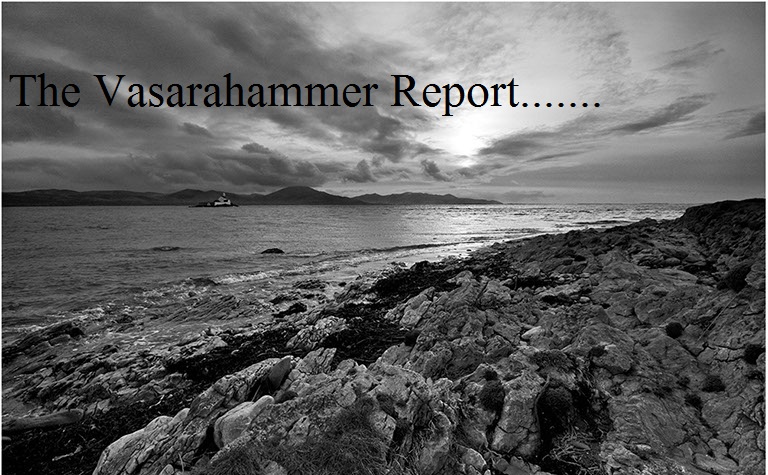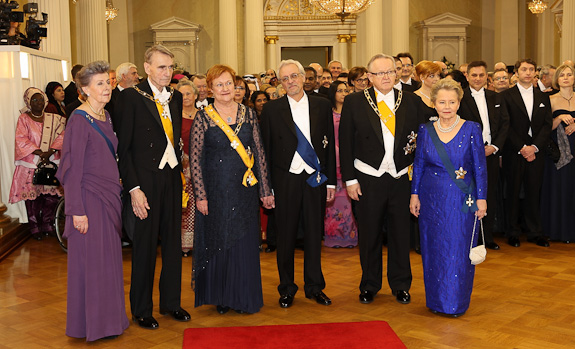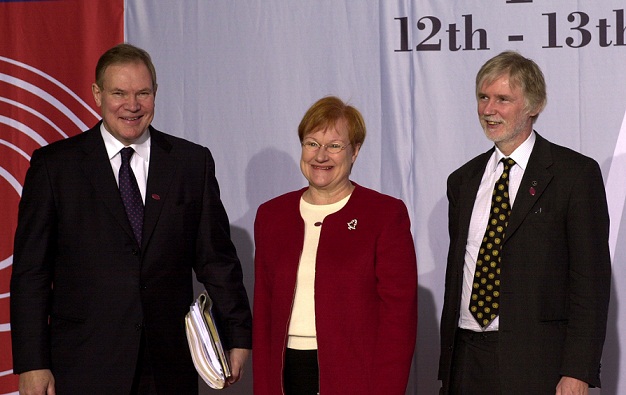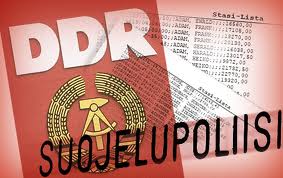Finnish blogger, Vasarahammer, files the following report at the Tundra Tabloids. KGS
Finland celebrated its 94th Independence Day last tuesday. As always, the weather was not very good and the sun only managed to stay above the horizon for roughly six hours.
Finnish progressives have always complained that the celebration of Finnish independence tends to be too militaristic and concentrates too much on the events of the Second World War. They think there should be other things to celebrate than the Winter War and the Continuation War, in which Finland was a co-belligerent with Nazi Germany but switched sides early enough not to be destroyed and succumbed by the Soviet Union like other Nazi allies.
The presidential ball on the Independence day evening allows the public to see the elite celebrate the day. The fact that the ball remains as popular as it has been since the televized broadcasts began, continues to baffle the progressive media elite. The popularity of the event is usually explained by the lack of royalty and the glamour attached to it. There is no king in Finland because Germany lost the First World War and Friedrich Karl, the prince of Hessen, did not attain the throne of Finland.
 This year’s celebrations were the last for the incumbent president Tarja Halonen. The theme of the celebration this year was equality and cooperation. The invited guests included many people who have worked for equality, tolerance and sustainable development. In practice, this meant that the guest list contained a large number of gays, which is appropriate to Halonen who is a former head of SETA, the main gay rights organization in Finland.
This year’s celebrations were the last for the incumbent president Tarja Halonen. The theme of the celebration this year was equality and cooperation. The invited guests included many people who have worked for equality, tolerance and sustainable development. In practice, this meant that the guest list contained a large number of gays, which is appropriate to Halonen who is a former head of SETA, the main gay rights organization in Finland.
Halonen will be an ex-president within a couple of months, but the upcoming presidential election has not attracted much enthusiasm among the electorate, partly because the office of the president has become largely ceremonial during the past decade. However, the turnout has traditionally been larger in the presidential election than in the parliamentary election.
Independence in peril
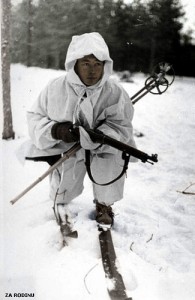 The WW II events are remembered during Indepence Day celebrations, because the existence of the Finnish nation was actually at risk during the Winter War and the last days of the Continuation war. Less attention is paid to the fact that Finnish indepence was also at risk during the years after WW II.
The WW II events are remembered during Indepence Day celebrations, because the existence of the Finnish nation was actually at risk during the Winter War and the last days of the Continuation war. Less attention is paid to the fact that Finnish indepence was also at risk during the years after WW II.
Immediately after the peace agreement with the Soviet Union, the communist front organization SKDL scored a big electoral victory and became the largest party in the parliament. The period after this victory is called the years of danger in the Finnish history, during which the communist coup d’etat seemed inevitable but eventually did not happen.
The second period of danger came in the early 1970’s, when the pro-Soviet ‘taistoist‘ movement had its heyday. After the crushing of the Prague spring the Soviet Union tightened its grip on the countries in their sphere of influence. This also included Finland and with the appointment of Aleksey Belyakov as the ambassador, Finland was to become the first country in the world that would embrace socialism by peaceful means.
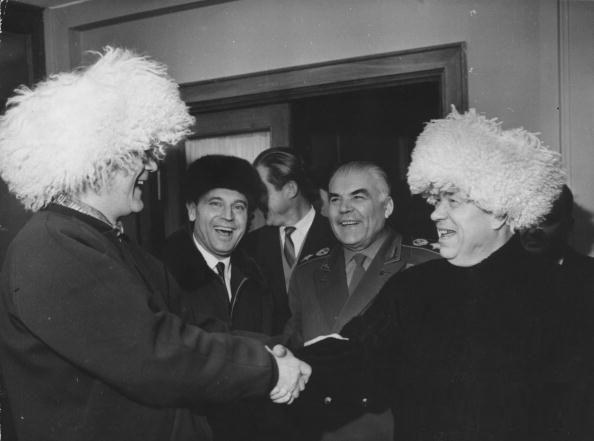 During the 1960’s Social Democrats escaped the role of outcasts in the Finnish politics by accepting president Urho Kekkonen’s foreign policy. In the early 70’s, the new faces in the Social Democratic Party played a key role in transforming the formerly reluctant party to a loyal follower of Paasikivi-Kekkonen foreign policy.
During the 1960’s Social Democrats escaped the role of outcasts in the Finnish politics by accepting president Urho Kekkonen’s foreign policy. In the early 70’s, the new faces in the Social Democratic Party played a key role in transforming the formerly reluctant party to a loyal follower of Paasikivi-Kekkonen foreign policy.
Among these new faces were Paavo Lipponen, Tarja Halonen and Erkki Tuomioja , who were to rise in politics during the latter decades. Lipponen, who was to become the Prime Minister, openly expressed his support of the centrally planned economy in the early 70’s. Halonen, on the other hand, became a member of the committe for the recognition of German Democratic Republic (GDR).
Coming back to the indepence day theme, the events in the 1970’s are not eagerly remembered during the independence celebrations or at any other time. The dirty laundry from the dark days of Finlandization still remains largely unwashed.
The Stasi list
The Finnish counter-intelligence organization Supo received the so called ‘Tiitinen list‘ from the German BND in 1990. It contained the names of Finnish citizens who had been in contact with the Helsinki representative of East German intelligence service, the Stasi. Then president of Finland Mauno Koivisto decided with the advice of the head of Supo, Seppo Tiitinen, that the list provides no cause for further investigation. The list was then locked up and archived by Supo and remains so until this day.
 The issue of Tiitinen’s list became a hot topic in 2002, when newspaper Helsingin Sanomat told about the 20 names on the list and the fact that it remains locked up in a safe by Supo. The issue was raised again, when Alpo Rusi and his brother Jukka were suspected for spying for GDR. In the trial Rusi demanded that the list should be made public. Rusi was acquitted in the trial and later sued the Finnish government for damages.
The issue of Tiitinen’s list became a hot topic in 2002, when newspaper Helsingin Sanomat told about the 20 names on the list and the fact that it remains locked up in a safe by Supo. The issue was raised again, when Alpo Rusi and his brother Jukka were suspected for spying for GDR. In the trial Rusi demanded that the list should be made public. Rusi was acquitted in the trial and later sued the Finnish government for damages.
The reasons why the Tiitinen list still remains at the hands of Supo are not clear. Officially, the contents of the list may endanger state security. The secrecy around the list has fuelled wild speculations about the possible names on the list including the current president Tarja Halonen.
It is indeed likely that the contents of the list might be especially embarassing to the Social Democratic Party, which has held the office of the president since the early 1980’s. It might also be embarassing to the former Prime Minister Paavo Lipponen who is currently running for president.
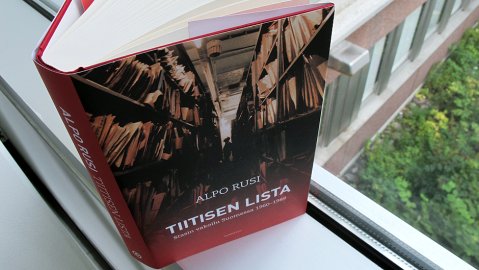 During the 1970’s the Social Democrats tried to prove their credentials in terms of foreign policy and their loyalty to president Kekkonen. Maintaining contacts with the East Germans was part of that policy as well as public support for the recognition of GDR.
During the 1970’s the Social Democrats tried to prove their credentials in terms of foreign policy and their loyalty to president Kekkonen. Maintaining contacts with the East Germans was part of that policy as well as public support for the recognition of GDR.
Alpo Rusi who worked as an advisor to president Martti Ahtisaari from 1994 to 1999 has studied the relations between Finnish politicians and the Stasi in a recently published book about the Tiitinen list. In that book he claims that long time Prime Minister Kalevi Sorsa was one of the names in the list. Rusi also claims that it was Sorsa who was responsible for Rusi’s prosecution for his alleged Stasi connections.
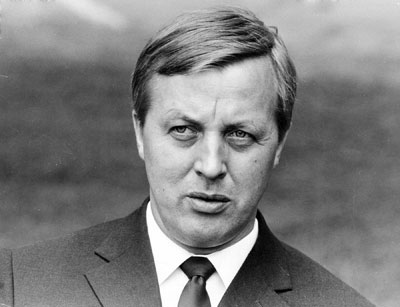
Rusi also stated that the defeat of Sorsa in the SDP presidential primary in 1993 was vital for the national security. According to Rusi, Sorsa crossed the line between what was appropriate and what was not in his dealings with the KGB. Sorsa allegedly made a deal with the KGB during his days working for UNESCO in Paris. This also explains why he rose straight from the unknown to become the leader of SDP.
Independence in peril again
Finlandization, in fact, never ended, even though the Soviet Union ceased to exist. The collapse of the USSR was a tragedy not only to Vladimir Putin but also to Finnish political leadership who had for years practised the art of working with the big eastern neighbour.
Finland rushed to the European Union in 1995 to escape from Russian influence. However, the political culture has changed very little. Public discussion about the most important national topics has remained largely non-existent. There has always been only one possible way forward.
Finland joined the eurozone in 2002 with the leadership of Paavo Lipponen. There was no referendum and very little public discussion about the possible advantages and disadvantages of the common currency. Today Finland is the prisoner of the currency union playing the role of silent partner with the obligation to pay, but with the political influence that one per cent of the EU population can bring. It is like the finlandized political elite took the country from one political prison to another. Only the location of the masters has been moved from Moscow to Brussels.

